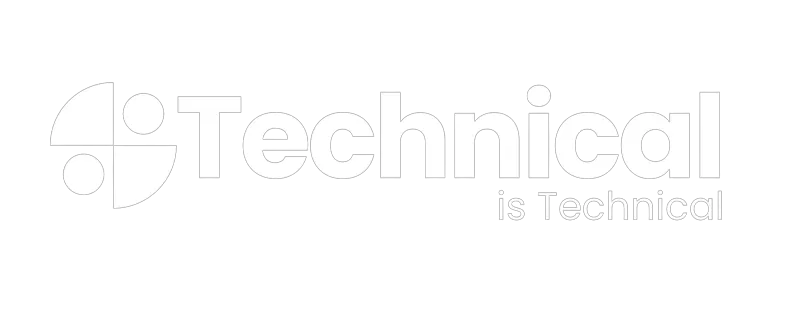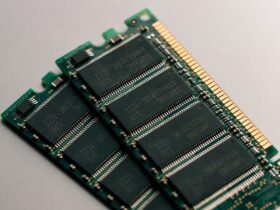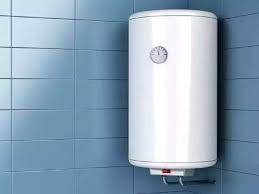Unlimited Internet access is essential for most people, such as running hot water or electricity. When it comes to a startup a reliable internet connection is the topmost priority. After all, many things can be done on the Internet, from weekly shopping to holiday planning. Yes, some people work or study completely online. The WWW is much more than Facebook and cat videos.
Most households go online via a DSL connection. After all, it is almost universally available and many providers have corresponding tariffs available. There are even so many of them that a DSL comparison is appropriate when a new registration or a tariff change is imminent. This comparison also reveals which internet speed can be achieved at the place of residence. After all, broadband expansion is far from complete.
While the inhabitants of big cities are already reveling in the fast-paced VDSL, people in village areas still have to be patient when surfing the Internet. But here, too, a high speed delivers everything that modern users want from the Internet compared to the past. Let’s take a closer look at the advantages of a DSL connection and how the DSL connection comparison leads to the best Internet tariff.
What is DSL?
The abbreviation DSL stands for Digital Subscriber Line (or US: digital local loop) and refers to a number of technologies in which Internet data is transmitted over the telephone line. This is how it works: The line is divided into two frequency ranges. While phone calls are sent in the low frequency range, high frequencies are available for data signals. This allows for fast data transmission, which is why DSL with cable internet and LTE is part of the broadband Internet.
A device plugged into the telephone socket, the so-called splitter, separates the two signals. In this way they do not disturb each other, phone calls and surfing in the WWW are possible at the same time. Internet users in the first hour may remember their ISDN connection and how they had to leave the Internet if another family member wanted to make a call.
Since most telephone lines have now been switched from analog to VoIP technology, splitters are hardly to be found. In this further development, the call is transmitted in the form of digital data packets instead of electrical signals. This increases bandwidth because the frequency range previously reserved for making calls is now available for the transmission of Internet data. The phone is connected directly to a suitable router that is able to convert the language packed into data back into acoustic signals.
Meanwhile, only 530,000 German households have an analogue telephone connection (as of January 2020). Telekom has already switched its connections to VoIP telephony by the end of 2018, but some regional providers will take longer to do so.
Read: The Stupefying Surprises a SmartPhone Can Offer its User!
The different DSL standards
ADSL and the newer version ADSL2+ stands for Asymmetric DSL. This means that upload and download speeds are different and data is received faster than sent. An ADSL connection is primarily designed for surfing. This is the default port, which includes DSL 6000 to DSL 16,000 and possible intermediate stages. With this technology, transfer rates of up to 25 Mbps are possible, the maximum upload speed is 1 Mbps.
The V in VDSL stands for very high speed, very high speed.With a VDSL line, downloads between 50 and 100 Mbps can be realized. Because it is an asymmetric connection, the upload is significantly lower at a maximum of 10 Mbps.
VDSL is a modern Internet connection and also comes from the telephone box. Its availability depends on the local infrastructure, which does not yet have the necessary standard.
The transmission takes place via fiber optic and copper cables, which is why the hybrid network is often spoken of: From the local exchange to the multifunctional housing. Lies the fiber optic cable, to the customer’s house then leads the copper cable. This has the advantage of a short transport distance, as long lines result in damping losses and thus a reduced surfing speed. With the so-called super vectoring technology, speeds of up to 250 Mbps can be achieved. In which areas
Data is received as quickly as sent via SDSLlines. This is of particular interest to business customers who need to upload large data. Large corporations, where all communication is via IP telephony, require SDSL. Such tariffs do not usually exist for private customers.
The benefits of a DSL connection
If you are looking for an Internet Service Provider, you can choose from different connection forms, for example by cable, satellite, or even the telephone line. What are the advantages of a DSL connection compared to the other possibilities?
First of all, almost every apartment is connected to the grid with a telephone socket. As a result, DSL is available in 96% of all American households – although not everywhere with the largest bandwidth. In addition, there is a wealth of different tariffs with different extras and speeds from which consumers can choose the one that best suits their usage habits. In particular, contracts for Internet lines with low transmission rates are cheap and therefore ideal for casual surfers.
With VDSL, relatively high upload speeds are achievable, so this port form fits all those who rely on fast sending large amounts of data or who frequently make video calls. In addition, it promises a high bandwidth and thus meets the wishes of those users who like to stream series and movies in HD quality or where many people are online at the same time.
For a large part of the DSL connection tariffs, a landline connection is included. Telephone and internet can be used unlimited at a fixed price. Volume or time tariffs were common in the early days of the Internet, but are no longer up-to-date. Only a few providers limit the amount of data that can be used every month and throttle the speed after they are used up.
Setting up the home network is easy with a DSL connection. The heart of the system is a router, which is usually provided by the provider free of charge or for a low rent. The phone is connected to this device and can also generate a Wi-Fi network, enabling wireless connection to the Internet. In addition to computers and tablets, other devices can log into or connect to the network. For example, the Wi-Fi-enabled printer, the vacuum cleaner robot or the cat flap, which automatically sends a notification to the smartphone when the Stubentiger returns from his trip.
What DSL speed do I need?
If you want to sign an Internet contract for the first time or switch to a new provider, you will be particularly wondering, “How fast does my Internet connection have to be?” While city dwellers usually have a handsome choice, people living in the countryside sometimes have to come to terms with a slow connection. This is due to the lack of availability of broadband connections outside conurbations.
But faster doesn’t necessarily mean better. Since high-bandwidth DSL tariffs also cost more, it is important to estimate their usage behavior correctly so as not to end up paying too much. The appropriate speed depends on the following factors:
- Number of Internet users living in the home
- Number of devices accessing the Internet
- Services used
New DSL ports below 16 Mbps are rare. This is the lowest standard, which is perfectly sufficient for casual users who live alone or two. This group includes anyone who reads messages online, sends mail, manages their account, and then-shops or watches a video. They use the Internet on their computer and smartphone, but apart from that, they do not have any other devices that require long-term Wi-Fi. For more on the download and upload time go to https://www.downloadtime.org.
If you want to have high demands on the Internet, stream HD movies, binge watch your favorite series, download large amounts of data and gamble online games, you need transfer rates of at least 50 Mbps. This is the right speed for couples, families and flats. This allows multiple users to surf or watch movies at the same time without noticing any loss in the transfer rate. If you want to sign a single contract for phone, internet and television with Triple Play, you need at least 50 Mbps. For slower connections, Triple Play does not work as desired.
VDSL lines with 100 Mbps and more are extremely fast. This wide range is ideal for households where several people use the Internet intensively in parallel. For example, by playing online, watching movies and series in HD, or logging into the corporate network via VPN to work. Residents of a smart home need this speed to take full advantage of its functions. Users who, for example, run their own YouTube channel or often send large amounts of data for professional reasons, appreciate VDSL due to the high upload rate.
DSL providers promise a high bandwidth, but those who have a DSL-50 tariff do not continuously benefit from a download rate of 50 Mbps. In most cases, the GTC or the service description set a minimum speed, which the provider undertakes to provide. This is usually half the advertised rate. However, if the rate falls repeatedly or even permanently below this value, the user can complain and claim the contractually agreed service by a certain period of time.
If the provider does not fulfill these, the customer may make use of his special right of termination, provided that this is granted to him in the General Terms and Conditions. Another possibility would be to initiate a conciliation procedure at the Federal Network Agency in Bonn on the basis of section 04a of the telecommunication act. An advertising promise does not guarantee a certain DSL Speed. In addition, the provider’s information only applies if the hardware provided by the provider is used.
Which DSL line do I have?
To check how fast the Internet connection is actually, a speed test is a good way to test. There are numerous contact points for this on the Internet. In addition to speedtest.net, the broadband measurment of the Federal Network Agency is well suited for checking the real transmission rate. In addition to the speed of up- and download and ping, some of these websites reveal the IP address of the tested device and the name of the Internet service provider. Such a check is useful if the Internet is remarkably slow and there is a suspicion that the speed promised by the provider is not being reached.
During the speed test, the test center server sends multiple data packets of different sizes to the computer, which receives them and then sends them back. In addition to the speed, it measures how long it takes the computer to upload the data and receive the response. That’s the ping. The faster it is, the smoother the running of online games and streamed movies. Ideally, for DSL connections, it is 40-50 milliseconds, and for a VDSL port it should be twice as fast at 15-20 milliseconds.
In order for the result of the speed test to be as meaningful as possible, the user should observe the following points:
- Disconnect all other devices from the mains.
- When checking a Wi-Fi connection, get as close as possible to the router.
- The device must not be in power-saving mode.
- Exclude that there is no speed throttling.
If the transmission rate is below the agreed minimum speed, the first fluctuations may be normal. Many tabs open in the browser or an outdated firmware of the router can affect the surfing speed. If the problem persists, regular measurements should be made over a longer period of time and the results should be documented. If everything does not help or breaks the connection completely, the customer has no choice but to call the fault hotline of his provider in order to rule out a technical fault.
Which DSL providers are available?
DSL providers are like sand by the sea. Some offer their services throughout US, while others can only be booked in certain areas. The latter category includes, for example, the Cologne-based provider NetCologne or the company FairSpeed in Freital, Saxony. If you want to know which Internet providers are operating in your neighborhood, you can check the network coverage with a DSL comparison or the broadband . Users who have already shortlisted a particular provider will request local DSL availability directly on their website. This information is provided after specifying the telephone code and the exact address.
The market leader is Telekom, followed by Vodafone, O2 and 1&1. Together with many smaller companies, they offer a large amount of different tariffs. These usually have one thing in common: they contain an Internet and a landline flat rate. Unlike mobile phone contracts, customers can surf the Internet indefinitely at a fixed price and make telephone calls on the German landline without fear of consequences in the form of a high bill.
Although pure data flats exist without a combination with the phone, these are usually more expensive. In addition, there are a lot of extra services, ranging from the mobile phone card to the storage space in the cloud.
Telekom is Europe’s largest telecommunications company and currently has 13.6 million broadband customers in US. No wonder that most offers stand out in the DSL fare comparison due to the distinctive magenta-coloured T. Your Internet packets range from 16 to 250 Mbps. For this purpose, the company’s own TV service Magenta TV can be booked, which provides access to streaming services such as Netflix or Amazon Prime on request.
For young users under the age of 28, there are particularly favorable rates. In addition, there are so-called hybrid tariffs, in which the router accesses the LTE network at high-speed requirements, i.e. uses fixed and mobile networks in parallel. In this way, Telekom wants to provide its customers with access to a broadband connection in areas with poor network expansion. The availability of DSL from Telekom is available in around 96% of all households throughout the US.






























